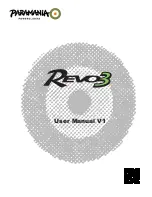
IV-10
February 2008
Legacy
IV-11
February 2008
Legacy
HOT STARTING
Starting a hot engine can be difficult. This is particularly true with fuel injected
engines and is generally due to vapor lock in the fuel system. All engines vary
in their starting characteristics within the same models due in part to technique.
Installation effects, fuel, battery condition etc. can all play a part. Cold engines
will have one starting characteristic, another when hot after 10 or 15 minutes, and
perhaps another after 30 minutes or so. Some experimentation and taking notes
as to the technique that works, as well as advice from others who operate the same
model engine can be helpful.
NOTE
Be sure to allow adequate cooling periods between
starting attempts and avoid long continuous periods
of cranking as damage to the starter will result.
NOTE
In some cases with the Lycoming, the flooded
engine procedure may work well for starting a hot
engine.
WARNING
Should a backfire occur during any start, continue
cranking to draw any fire back into the engine. If
backfiring continues or an engine compartment fire
starts, shut down and EXIT the aircraft. Use fire
extinguisher to extinguish any fire.
GROUND WARM-UP
Teledyne-Continental, and Textron Lycoming aircraft engines are air-cooled and are
dependent on the forward speed of the aircraft for cooling. To prevent overheating,
it is important that the following rules be observed:
1. Head the aircraft into the wind.
2. Operate the engine on the ground with the propeller in “Full Increase”
RPM position.
3. Avoid prolonged idling at low RPM. Fouled spark plugs can result
from this practice.
Summary of Contents for Legacy
Page 6: ...Legacy ...
Page 8: ...I 2 February 2008 Legacy Intentionally Left Blank ...
Page 20: ...I 14 February 2008 Legacy NOTES ...
Page 21: ...I 15 February 2008 Legacy NOTES ...
Page 22: ...I 16 February 2008 Legacy NOTES ...
Page 24: ...II 2 February 2008 Legacy Intentionally Left Blank ...
Page 34: ...II 12 February 2008 Legacy NOTES ...
Page 35: ...II 13 February 2008 Legacy NOTES ...
Page 36: ...II 14 February 2008 Legacy NOTES ...
Page 38: ...III 2 February 2008 Legacy Intentionally Left Blank ...
Page 47: ...III 11 February 2008 Legacy NOTES ...
Page 48: ...III 12 February 2008 Legacy NOTES ...
Page 50: ...IV 2 February 2008 Legacy Intentionally Left Blank ...
Page 69: ...IV 21 February 2008 Legacy NOTES ...
Page 70: ...IV 22 February 2008 Legacy NOTES ...
Page 72: ...V 2 February 2008 Legacy Intentionally Left Blank ...
Page 90: ...V 20 February 2008 Legacy NOTES ...
Page 91: ...V 21 February 2008 Legacy NOTES ...
Page 92: ...V 22 February 2008 Legacy NOTES ...
Page 94: ...VI 2 February 2008 Legacy Intentionally Left Blank ...
Page 108: ...VI 16 February 2008 Legacy NOTES ...
Page 110: ...VII 2 February 2008 Legacy Intentionally Left Blank ...
Page 134: ...VII 26 February 2008 Legacy NOTES ...
Page 135: ...VII 27 February 2008 Legacy NOTES ...
Page 136: ...VII 28 February 2008 Legacy NOTES ...
Page 138: ...VIII 2 February 2008 Legacy Intentionally Left Blank ...
Page 158: ...VIII 22 February 2008 Legacy NOTES ...
Page 160: ...IX 2 February 2008 Legacy Intentionally Left Blank ...
Page 168: ...IX 10 February 2008 Legacy Emergency Procedures ...
Page 169: ...IX 11 February 2008 Legacy Emergency Procedures ...
Page 170: ...IX 12 February 2008 Legacy Emergency Procedures ...
Page 171: ...IX 13 February 2008 Legacy Emergency Procedures Continued ...
Page 172: ...IX 14 February 2008 Legacy Normal Procedures ...
Page 173: ...IX 15 February 2008 Legacy Normal Procedures Continued ...
Page 174: ...IX 16 February 2008 Legacy Performance System Description ...
Page 176: ...IX 18 February 2008 Legacy NOTES ...
Page 178: ...X 2 February 2008 Legacy Intentionally Left Blank ...










































